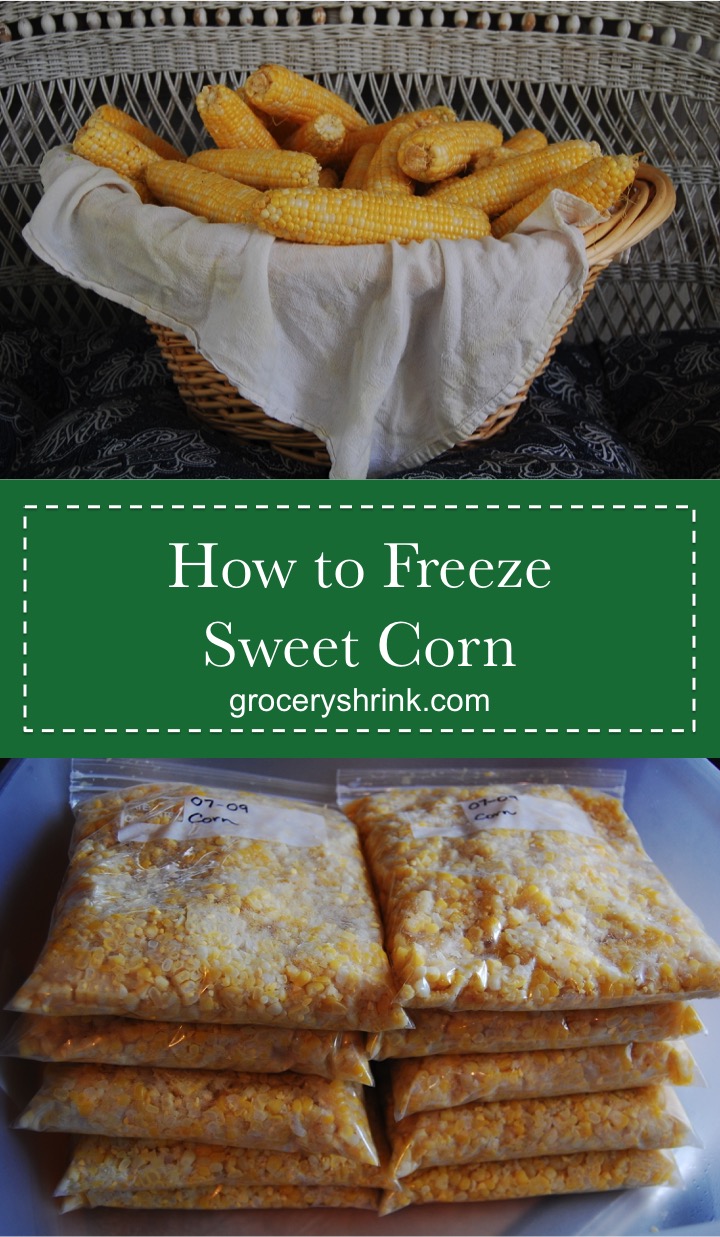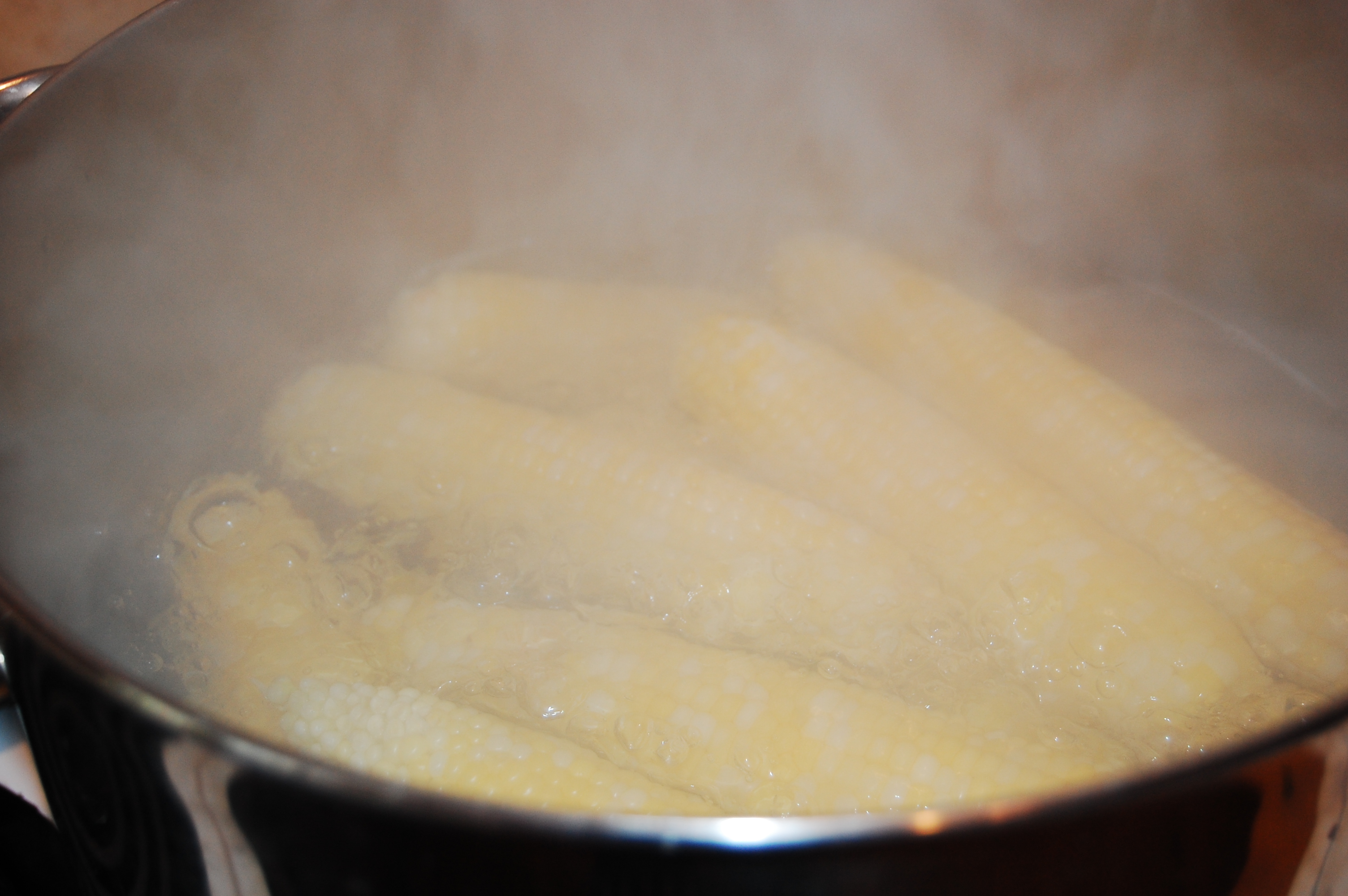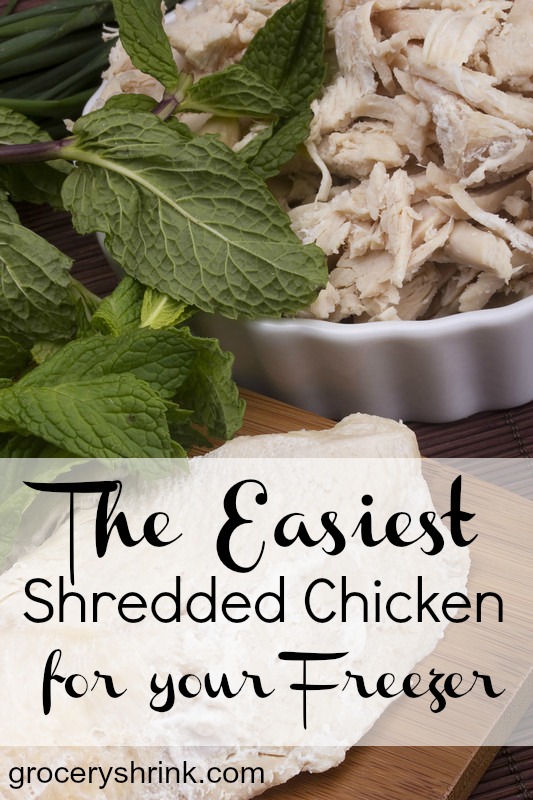It’s sweet corn season! Here’s a handy tutorial for when you have corn coming out your ears. (Get it? Ears.) Freezing sweet corn is fast and easy and preserves it’s fresh home-grown taste. The corn I will be showing is sugar and cream corn grown by my dad in his city garden. They were blessed this year with very healthy corn that gave 4 ears per stalk. That’s pretty rare in these parts.
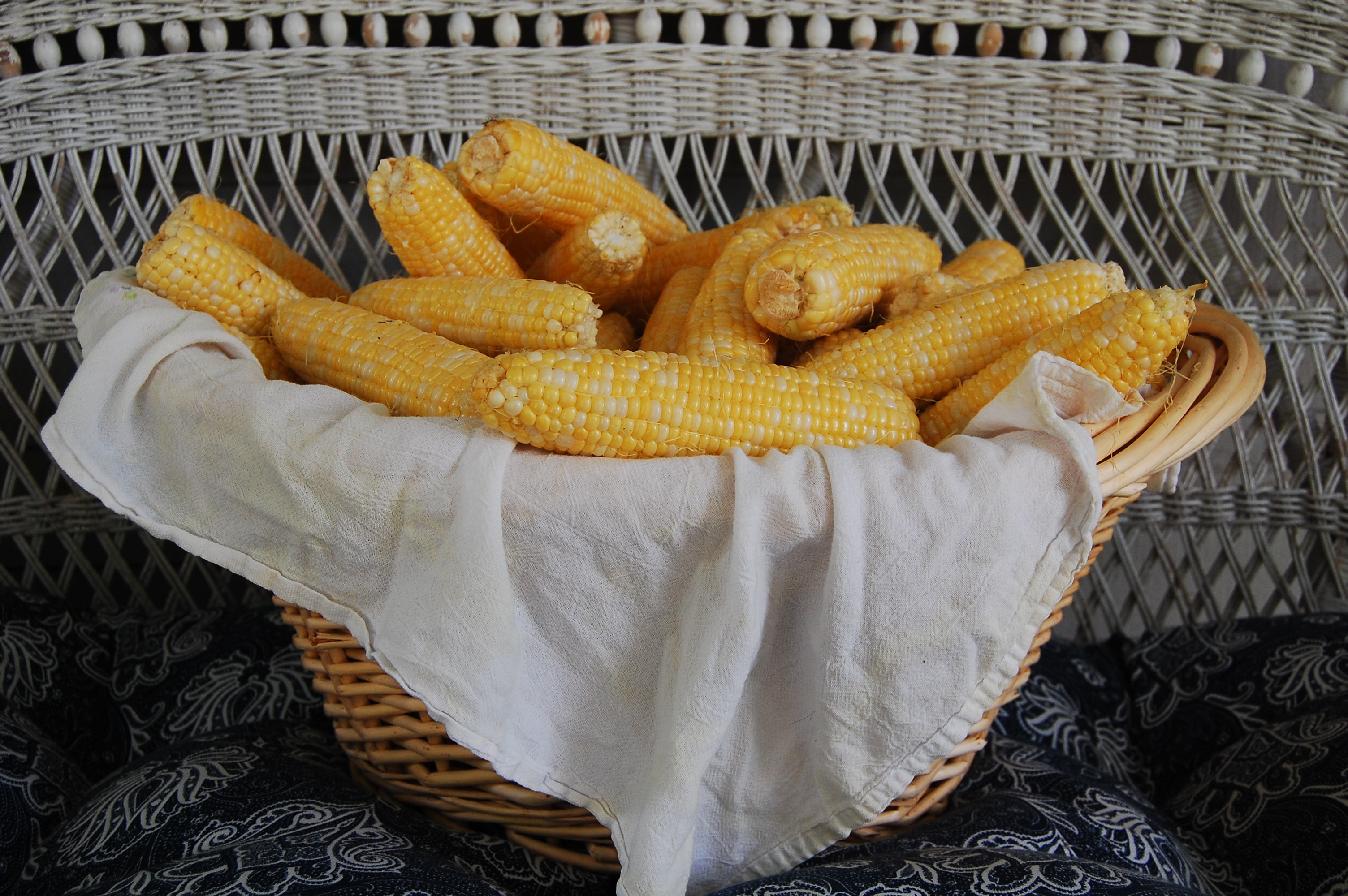
1. Shuck the corn outside (because it’s messy). The shucks are a nice addition to a compost pile.
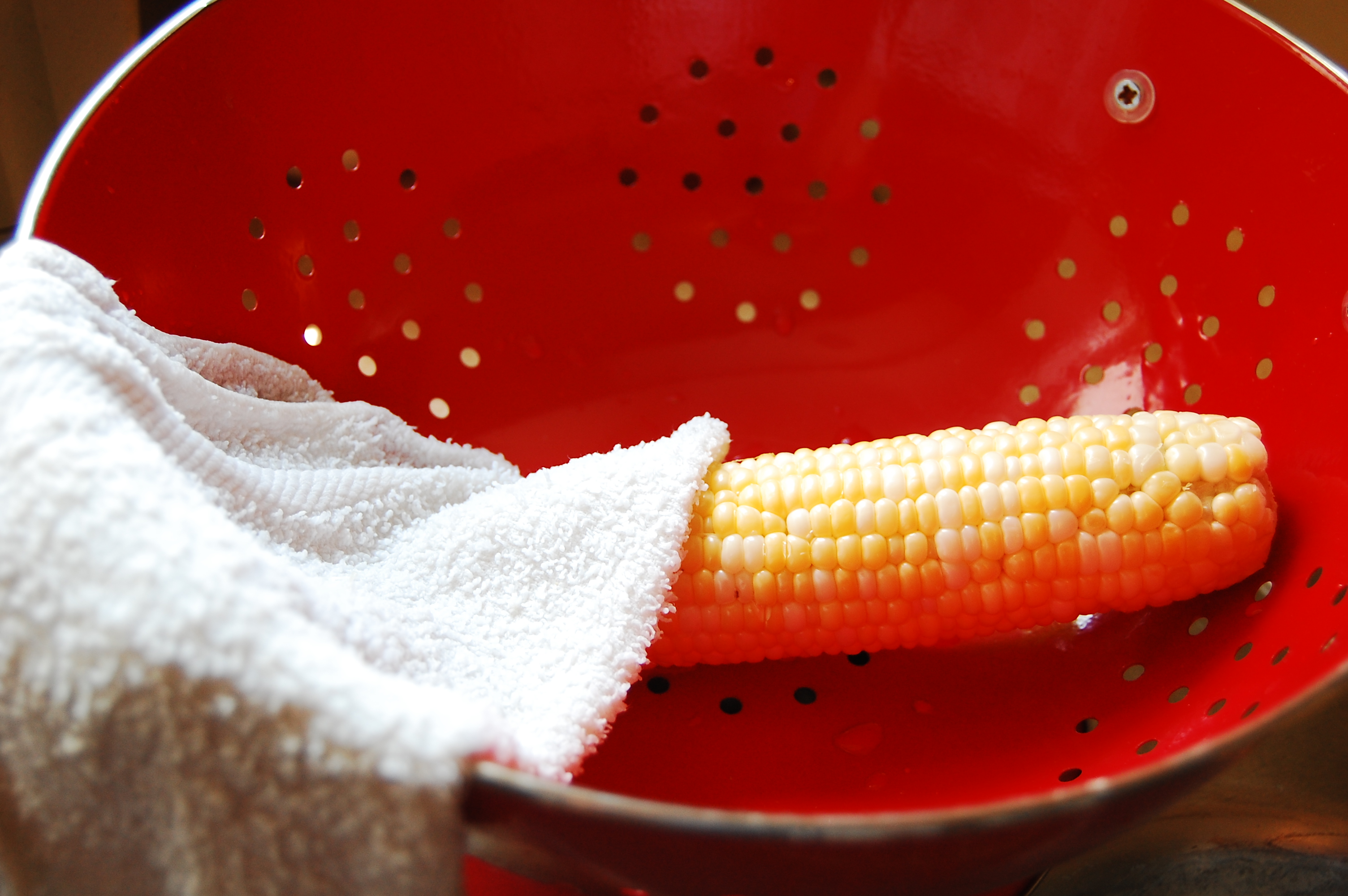
2. Wash the silky hairs off the corn. I like to use cool running water and a terry wash cloth. Microfiber cloths work well too. I like a cloth better than a corn brush. It covers more of the corn at once, so is faster and grabs the silk really well. I use about the same amount of pressure when washing corn as when I wash my baby’s face. Enough to clean without doing any damage.
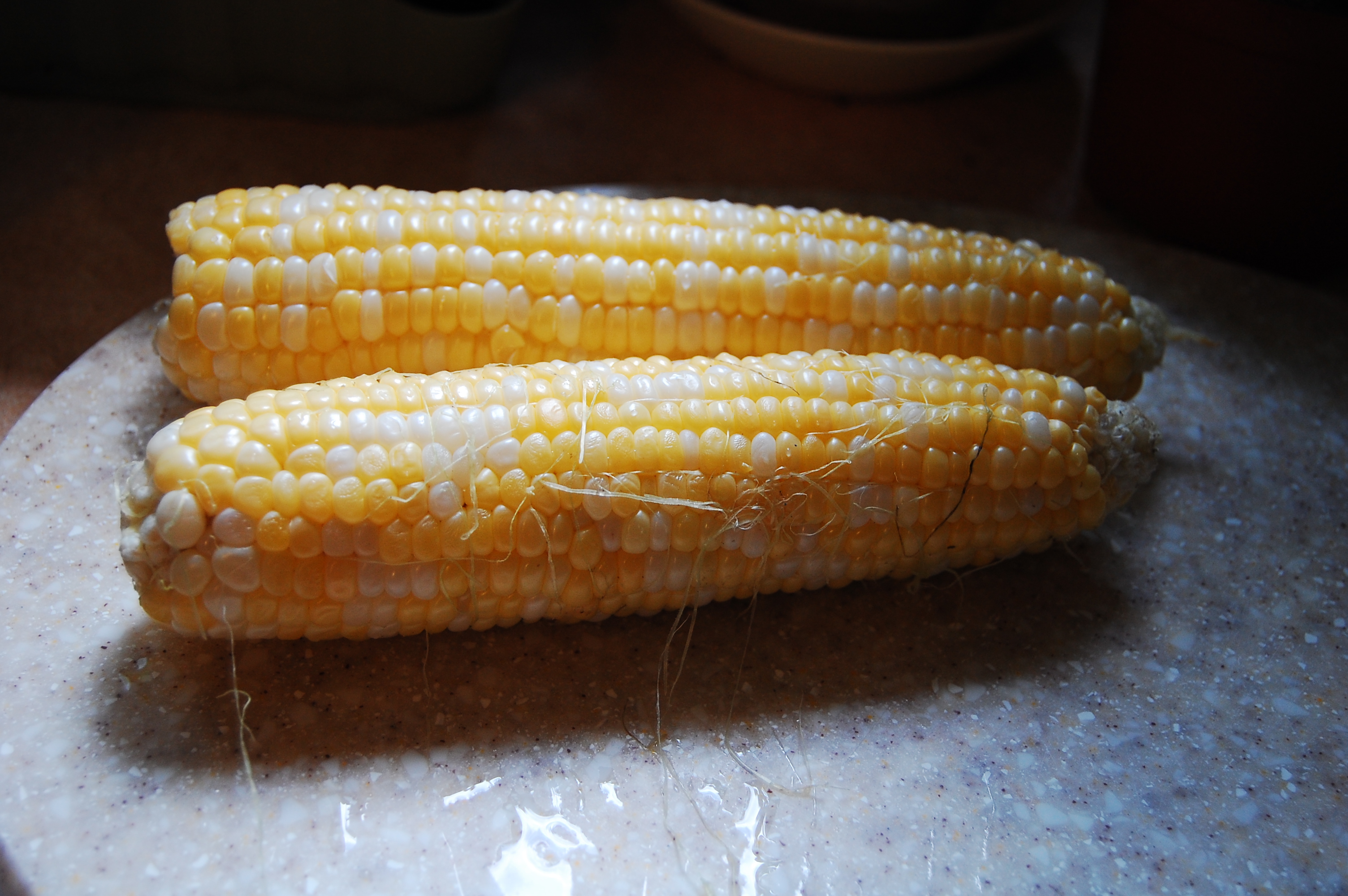
The front ear is freshly shucked. The back ear has been gently washed with a terry cloth.
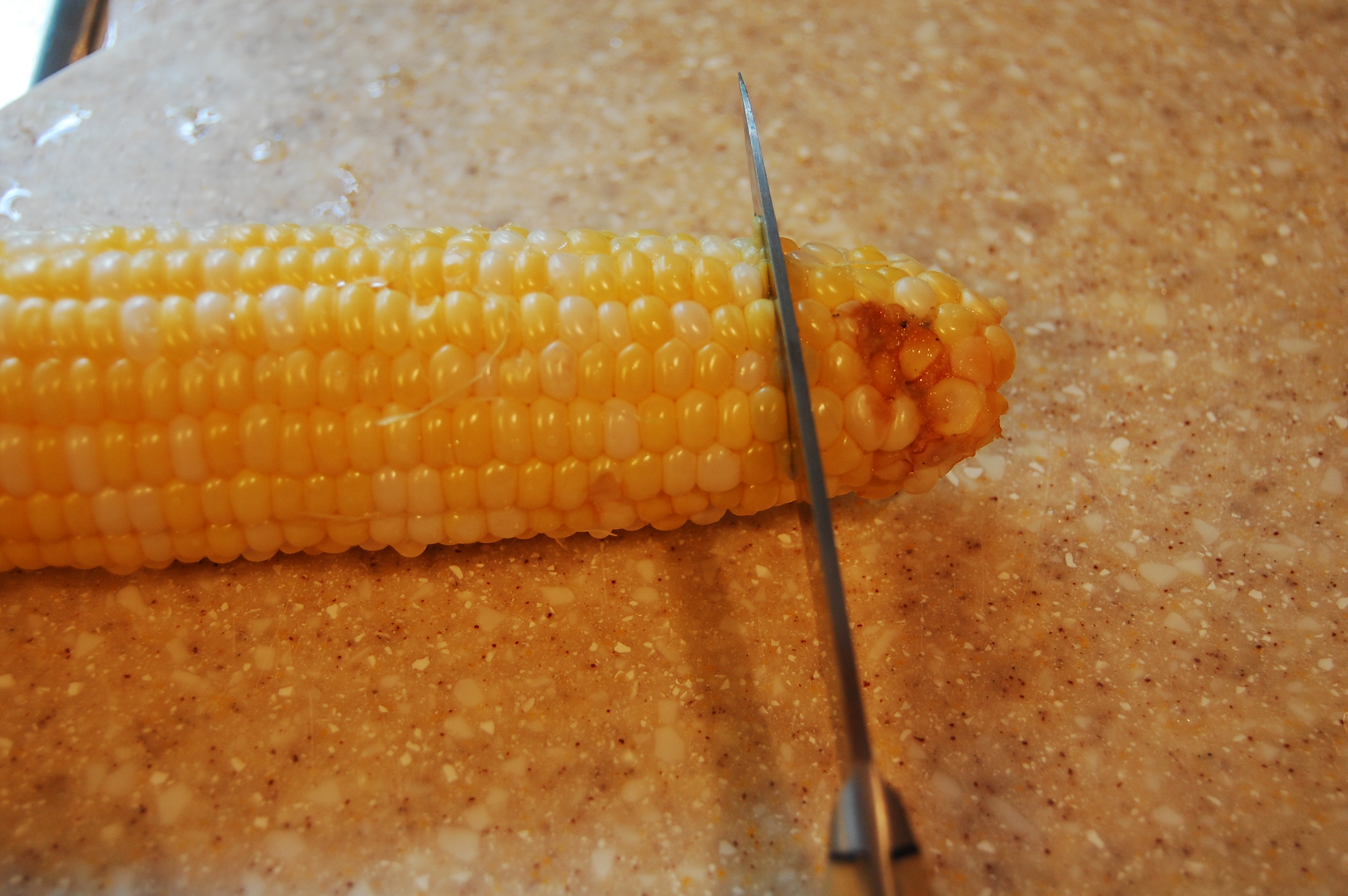
3. Cut any bad spots off the corn. This corn was raised without chemicals except for what came on the seed already and has a few worm spots. Most of it was spotless though. If you miss a bad spot, it will turn brown when it cooks and you can cut it out later.
4. Submerge several ears of corn in a large pot of boiling water. If you are freezing whole ears of corn, boil them for 8 minutes. If you are cutting the corn off the cob, boil for 6 minutes.
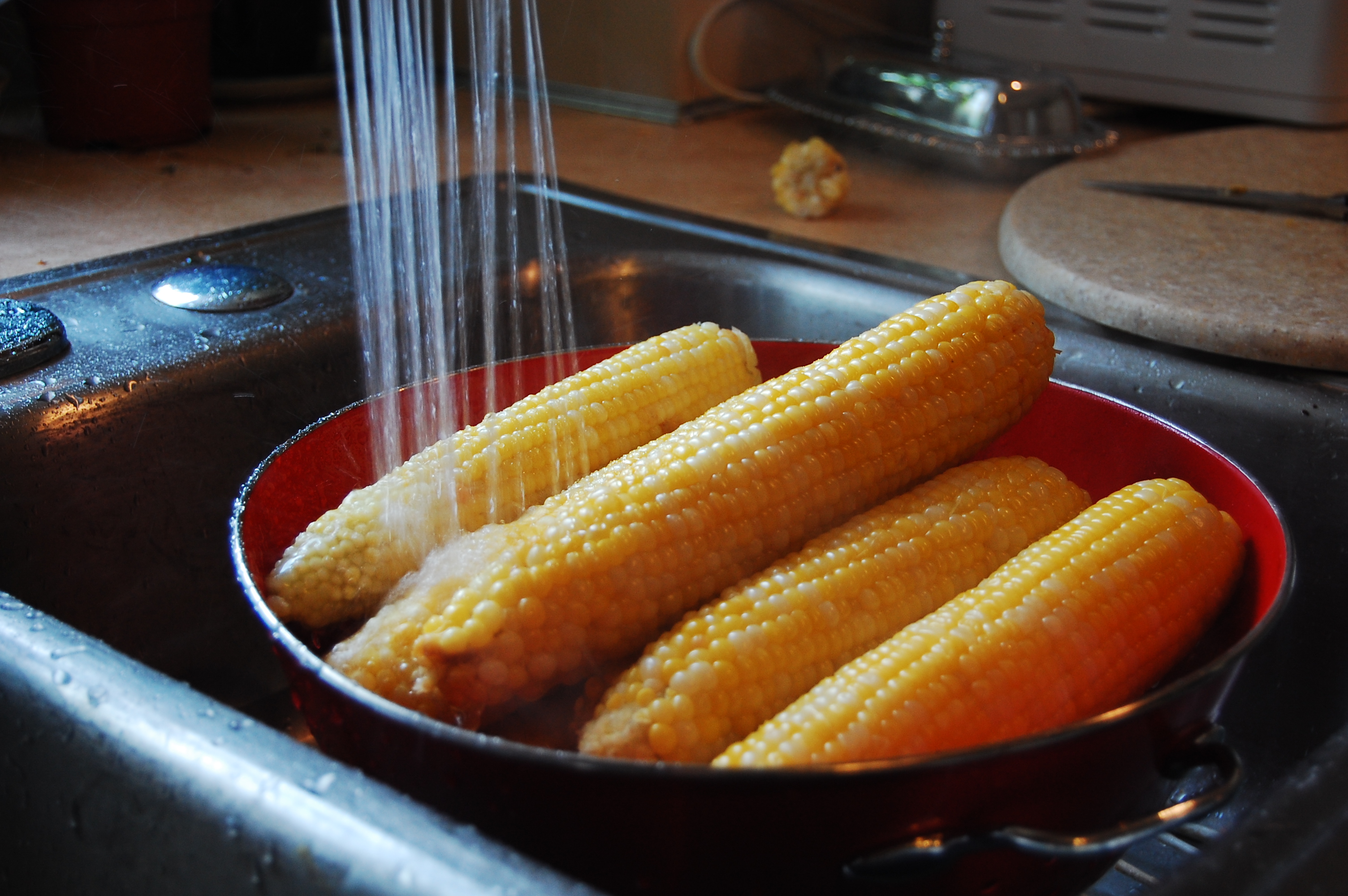
5. Use tongs to remove corn from the boiling water. Run it under cold water to cool or submerge it into a bowl of ice water for 6 minutes.
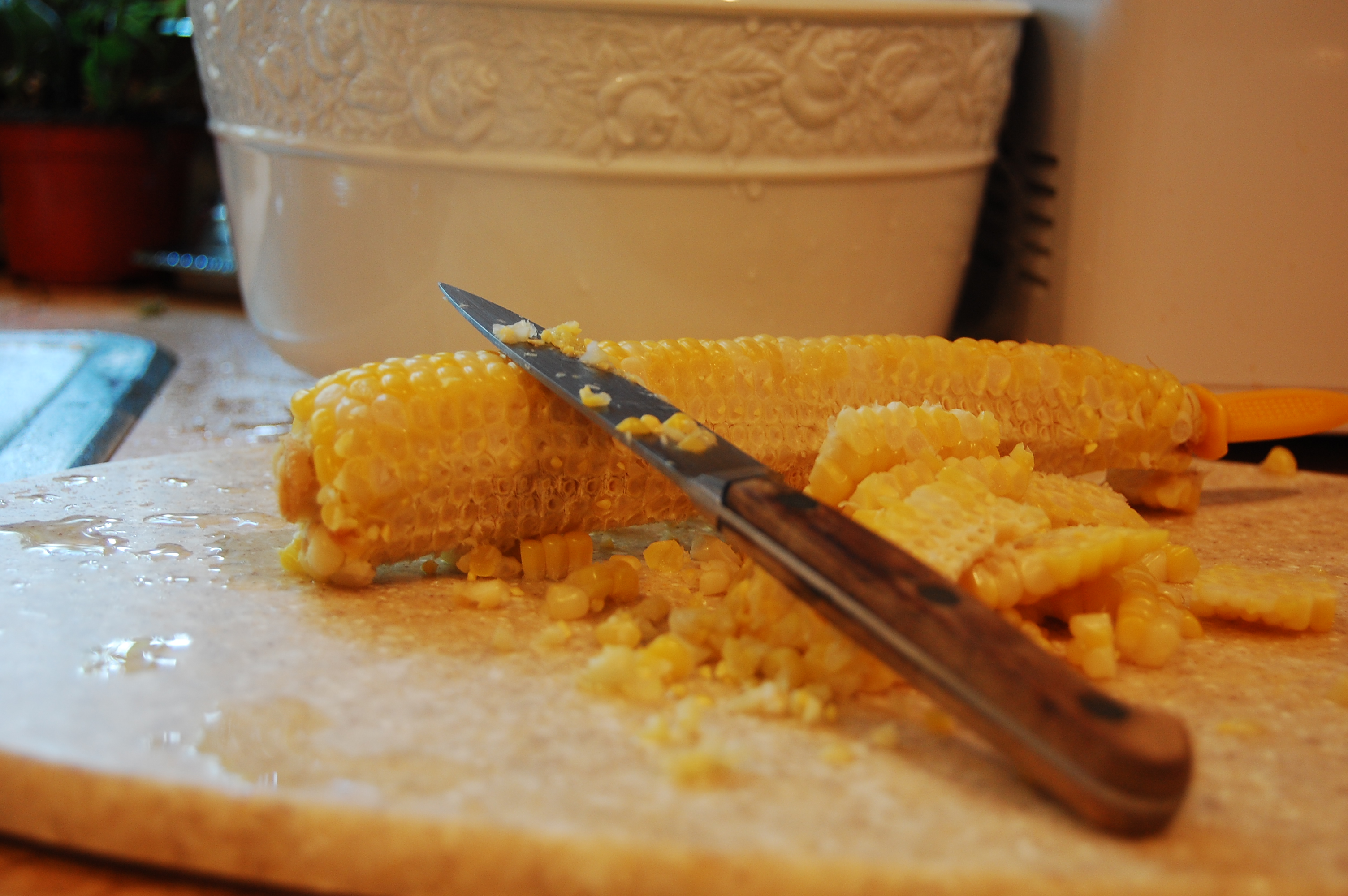
6. Use a sharp knife to cut the kernels off the corn. I like to take my knife and scrape the cob to get all the milk and ends out. We call that “cream style” on the farm. I cut as many cobs as I can fit into a large bowl before stopping to fill bags.
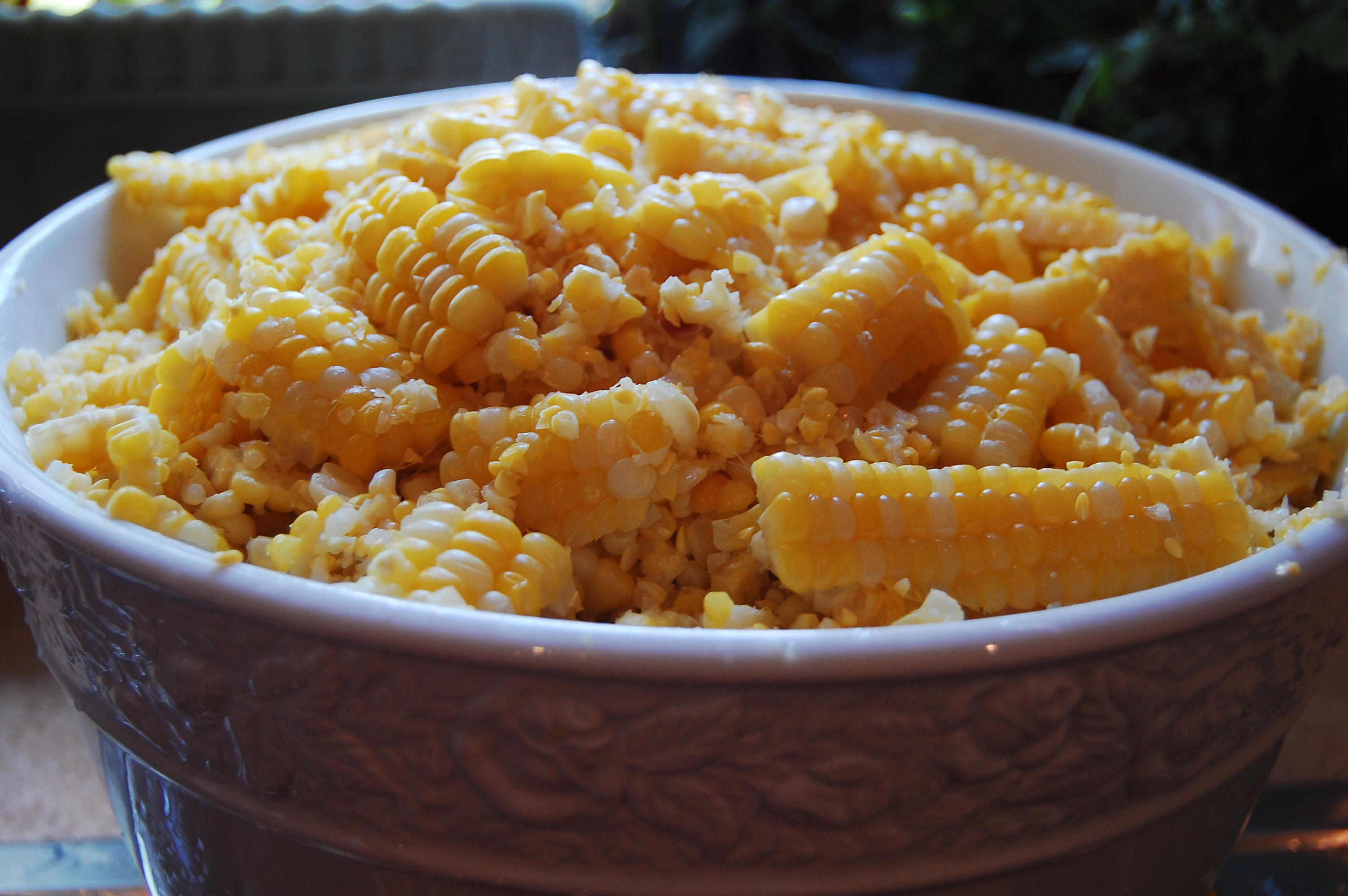
7. I package my corn in quart size freezer bags, and use a permanent marker to label the bags with the date and contents before filling. A one cup measuring cup is perfect for scooping the corn into the bags. Four full scoops is a quart. When the bags are full, press out all the air and seal them tight. I smoosh the corn around until the bag is nice and flat and stack them in a plastic dish tub for freezing. This freezes the corn in nice little stacks that fit well in my freezer.
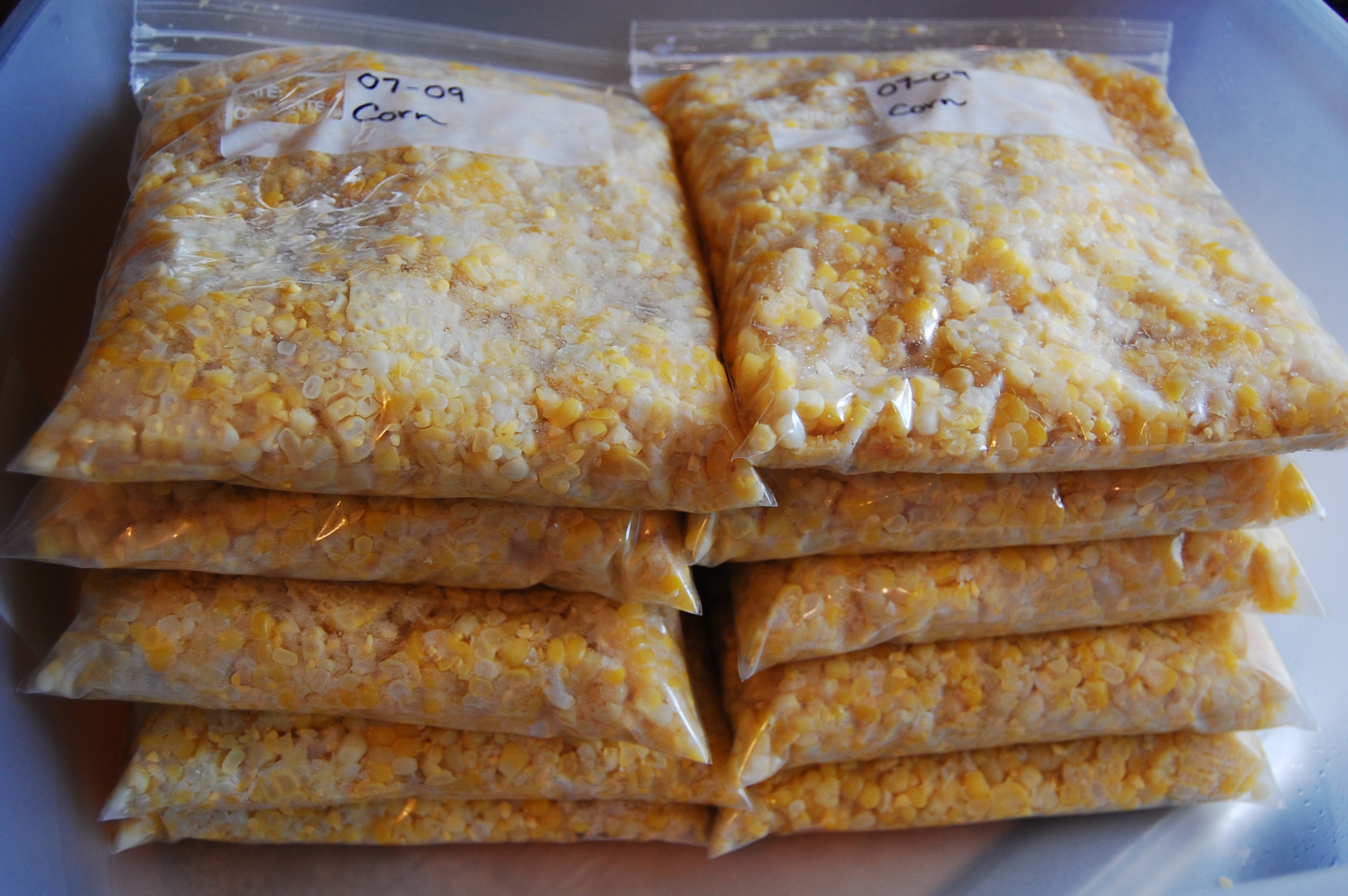
8. Even though you will be tired, be sure to clean up right away when you are finished. Corn juice is sticky and starchy and dries hard. It’s much easier to clean up when it’s fresh.
Thanks to my mom for picking and shucking the corn. And thanks to my Mother-in-love for showing me how to freeze it step by step. Remember the year my entire kitchen floor was covered a foot deep in corn? We had 3 years worth plus plenty to share after that.
This post originally appeared August 1st, 2009
